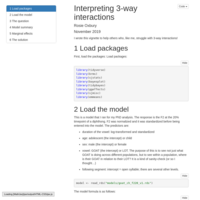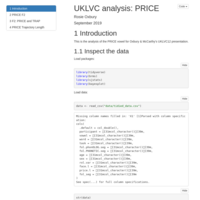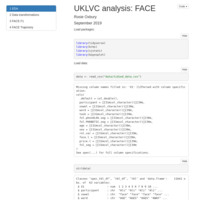Recently Published

Interpreting 3-way interactions in the regression output
This is a tale of woe: how I spent a long time interpreting 3-way interactions wrong, and what the correct way is.

UKLVC12: GOAT analysis
This is the analysis of the GOAT vowel in Multicultural London English for Oxbury & McCarthy's presentation at UKLVC 12. Two dimensions of variation in the GOAT diphthong are analysed: the F2 of the nucleus/first element/20% time point; and Trajectory Length, i.e. Euclidean distance of the vectors between the 20%, 35%, 50%, 65% and 80% time points in F1 and F2 space (Fox & Jacewicz 2009).

UKLVC12: PRICE analysis
This is the analysis of the PRICE vowel in Multicultural London English for Oxbury & McCarthy's presentation at UKLVC 12. Two dimensions of variation in the PRICE diphthong are analysed: the F1 of the nucleus/first element/20% time point; and Trajectory Length, i.e. Euclidean distance of the vectors between the 20%, 35%, 50%, 65% and 80% time points in F1 and F2 space (Fox & Jacewicz 2009).
Our findings for PRICE were the most striking: children tend to have a much more diphthongal PRICE vowel than the adolescents and are clearly acquiring PRICE as a diphthong.

UKLVC: FACE analysis
This is the analysis of the FACE vowel in Multicultural London English for Oxbury & McCarthy's presentation at UKLVC 12. Two dimensions of variation in the FACE diphthong are analysed: the F1 of the nucleus/first element/20% time point; and Trajectory Length, i.e. Euclidean distance of the vectors between the 20%, 35%, 50%, 65% and 80% time points in F1 and F2 space (Fox & Jacewicz 2009).